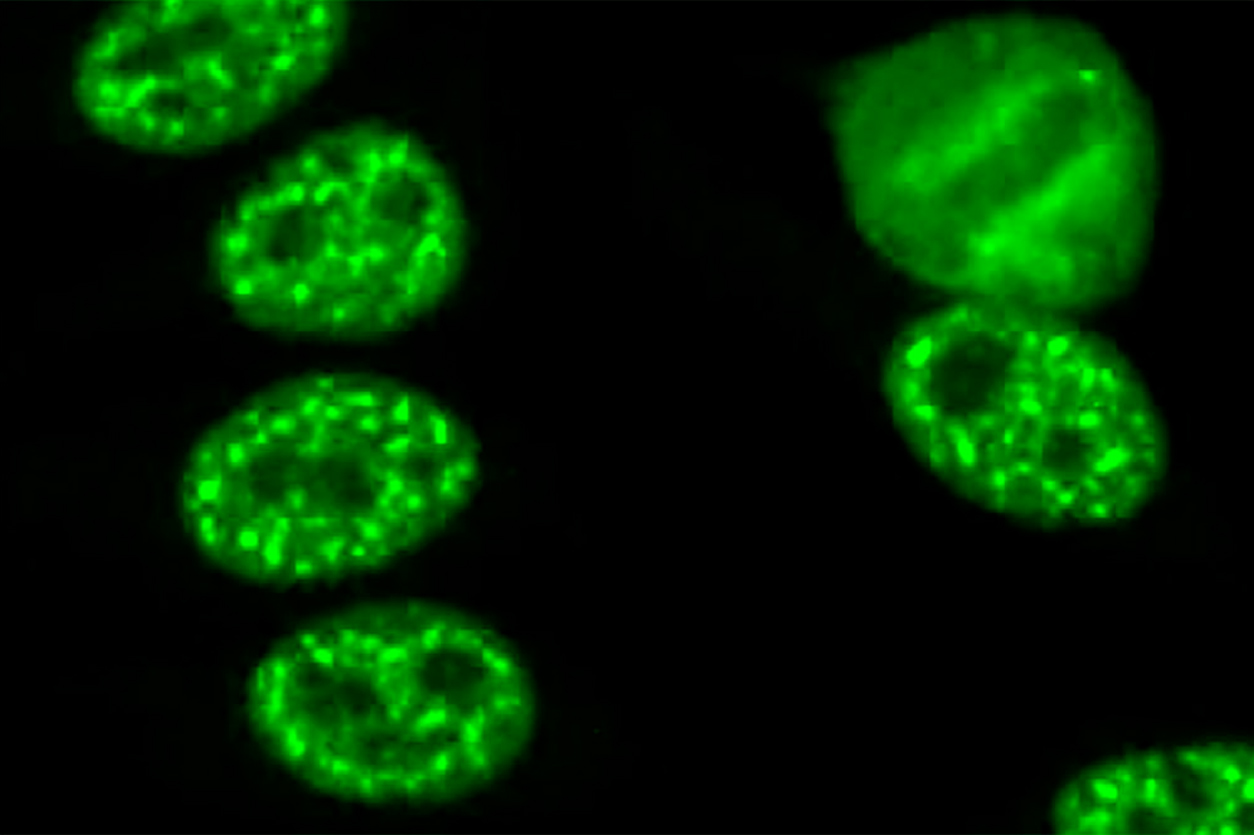Autoimmunity, a condition in which the body’s immune system reacts with components of its own cells, appears to be increasing in the U.S., according to NIEHS scientists and their collaborators.
 Miller also heads the NIEHS Environmental Autoimmunity Group. His team works to understand how genes and the environment may play a role in autoimmune diseases. (Photo courtesy of Steve McCaw)
Miller also heads the NIEHS Environmental Autoimmunity Group. His team works to understand how genes and the environment may play a role in autoimmune diseases. (Photo courtesy of Steve McCaw)In a study published April 8 in Arthritis and Rheumatology, the researchers found that the prevalence of antinuclear antibodies (ANAs), the most common biomarkers of autoimmunity, is significantly increasing in the U.S. overall and particularly in certain groups. These groups include males, non-Hispanic whites, adults 50 years and older, and adolescents. The study is the first to evaluate ANA changes over time in a representative sampling of the U.S. population.
'The reasons for the increases in ANA are not clear, but they are concerning and may suggest a possible increase in future autoimmune disease,' said corresponding and senior author Frederick Miller, M.D., Ph.D., deputy chief of the NIEHS Clinical Research Branch. Among his co-authors were Christine Parks, Ph.D., a staff scientist in the institute’s Epidemiology Branch, and NIEHS Scientific Director Darryl Zeldin, M.D.
'These findings could help us understand more about the causes of these immune abnormalities and possibly learn what drives development of autoimmune diseases and how to prevent them,' added Miller.
 Immunofluorescent staining of human cells shows ANAs as bright dots. (Photo courtesy of Edward Chan, Ph.D., University of Florida)
Immunofluorescent staining of human cells shows ANAs as bright dots. (Photo courtesy of Edward Chan, Ph.D., University of Florida)Concern regarding adolescents
 Parks is a member of the NIEHS Chronic Disease Epidemiology Group. She focuses on environmental causes of rheumatoid arthritis and other autoimmune diseases. (Photo courtesy of Steve McCaw)
Parks is a member of the NIEHS Chronic Disease Epidemiology Group. She focuses on environmental causes of rheumatoid arthritis and other autoimmune diseases. (Photo courtesy of Steve McCaw)The study included 14,211 participants, 12 years and older, in the U.S. National Health and Nutrition Examination Survey (NHANES). Through immunofluorescence, a technique in which fluorescent dye is used to visualize antibodies, the scientists examined the frequencies of ANAs in subjects from three time periods.
- 1988-1991: 11.0%, or 22 million affected individuals.
- 1999-2004: 11.5%, or 27 million individuals.
- 2011-2012: 15.9%, or 41 million individuals.
Of the four demographic groups that displayed considerable ANA increases, findings in the adolescent group were the most worrisome to the research team. The values for 12- to 19-year-olds increased nearly three-fold over the study period.
The researchers want to know why they are seeing these changes in autoimmunity in each of the groups, especially teenagers. The scientists suggest that because people have not changed much genetically during the past 30 years, factors related to lifestyle or the environment may be involved in ANA increases.
Autoimmune diseases
'These new findings may have important public health implications and will help us design studies to better understand why some people develop autoimmune diseases,' said Parks. She added that autoimmune diseases include more than 100 chronic, debilitating conditions.
Determining whether autoimmune diseases, such as lupus or myositis, are increasing in prevalence requires a clinical evaluation, which was not performed in this study. Nevertheless, ANAs are commonly seen in patients with these conditions and similar autoimmune disorders.
 Zeldin also leads the NIEHS Environmental Cardiopulmonary Disease Group. (Photo courtesy of Steve McCaw)
Zeldin also leads the NIEHS Environmental Cardiopulmonary Disease Group. (Photo courtesy of Steve McCaw)Zeldin noted that other studies have suggested there is an increase in autoimmune disease prevalence, but the findings are based on incomplete data. He and Miller hope that a national registry of autoimmune diseases will be established so that they can examine changes over time, define geographic hotspots, and eventually understand what is causing them.
'Hopefully, this important study will stimulate further research on the environmental factors related to the apparent increased prevalence of autoimmune diseases,' Zeldin said.
Citation: Dinse GE, Parks CG, Weinberg CR, Co CA, Wilkerson J, Zeldin DC, Chan EKL, Miller FW. 2020. Increasing prevalence of antinuclear antibodies in the United States. Arthritis Rheum; doi: 10.1002/art.41214 [Online 8 April 2020].









